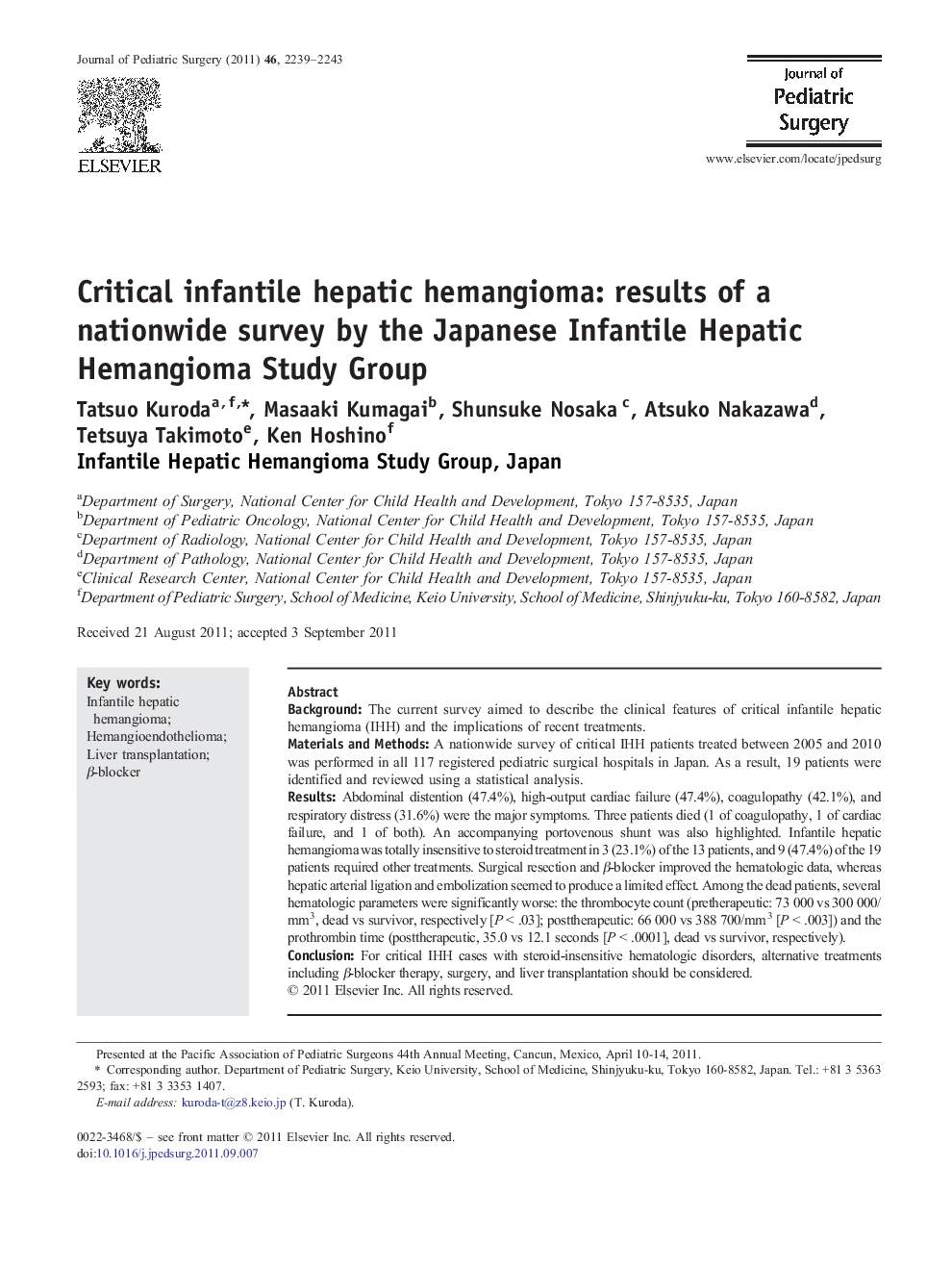| Article ID | Journal | Published Year | Pages | File Type |
|---|---|---|---|---|
| 4156679 | Journal of Pediatric Surgery | 2011 | 5 Pages |
BackgroundThe current survey aimed to describe the clinical features of critical infantile hepatic hemangioma (IHH) and the implications of recent treatments.Materials and MethodsA nationwide survey of critical IHH patients treated between 2005 and 2010 was performed in all 117 registered pediatric surgical hospitals in Japan. As a result, 19 patients were identified and reviewed using a statistical analysis.ResultsAbdominal distention (47.4%), high-output cardiac failure (47.4%), coagulopathy (42.1%), and respiratory distress (31.6%) were the major symptoms. Three patients died (1 of coagulopathy, 1 of cardiac failure, and 1 of both). An accompanying portovenous shunt was also highlighted. Infantile hepatic hemangioma was totally insensitive to steroid treatment in 3 (23.1%) of the 13 patients, and 9 (47.4%) of the 19 patients required other treatments. Surgical resection and β-blocker improved the hematologic data, whereas hepatic arterial ligation and embolization seemed to produce a limited effect. Among the dead patients, several hematologic parameters were significantly worse: the thrombocyte count (pretherapeutic: 73 000 vs 300 000/mm3, dead vs survivor, respectively [P < .03]; posttherapeutic: 66 000 vs 388 700/mm3 [P < .003]) and the prothrombin time (posttherapeutic, 35.0 vs 12.1 seconds [P < .0001], dead vs survivor, respectively).ConclusionFor critical IHH cases with steroid-insensitive hematologic disorders, alternative treatments including β-blocker therapy, surgery, and liver transplantation should be considered.
